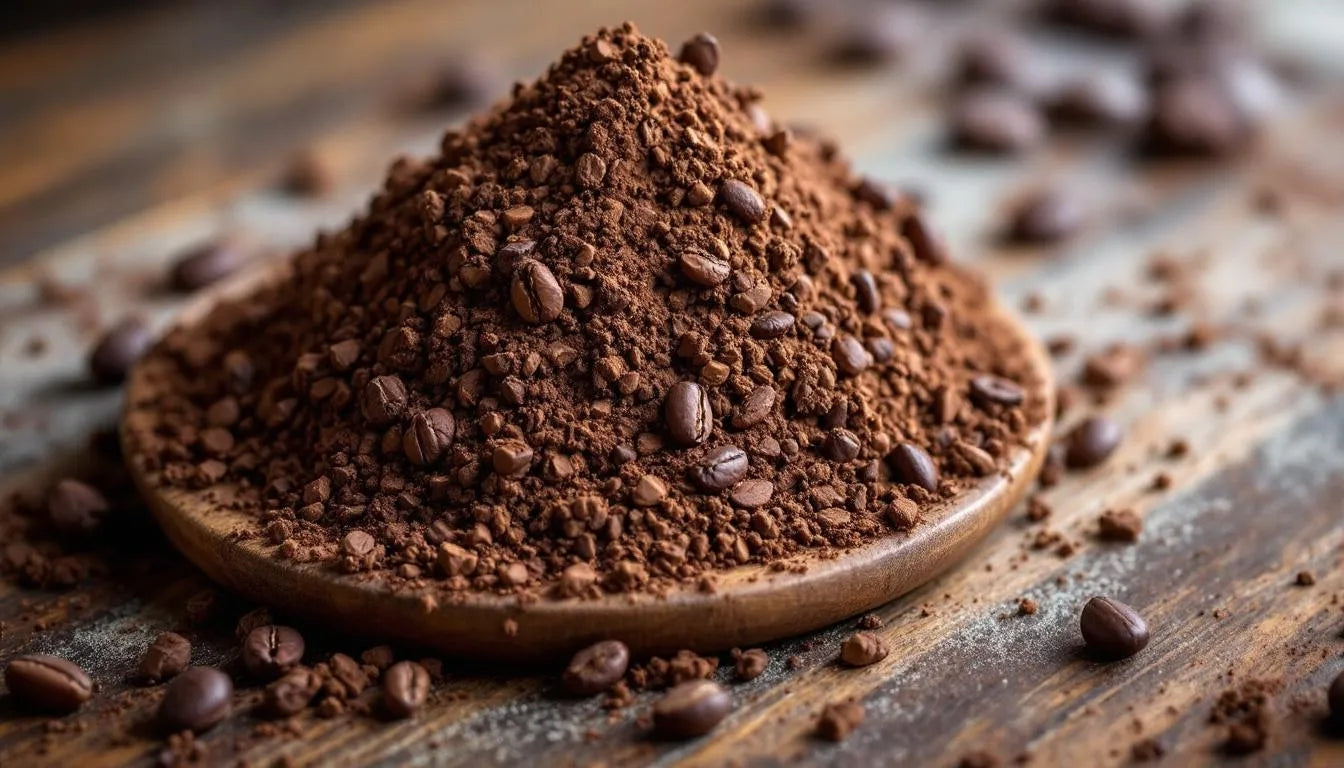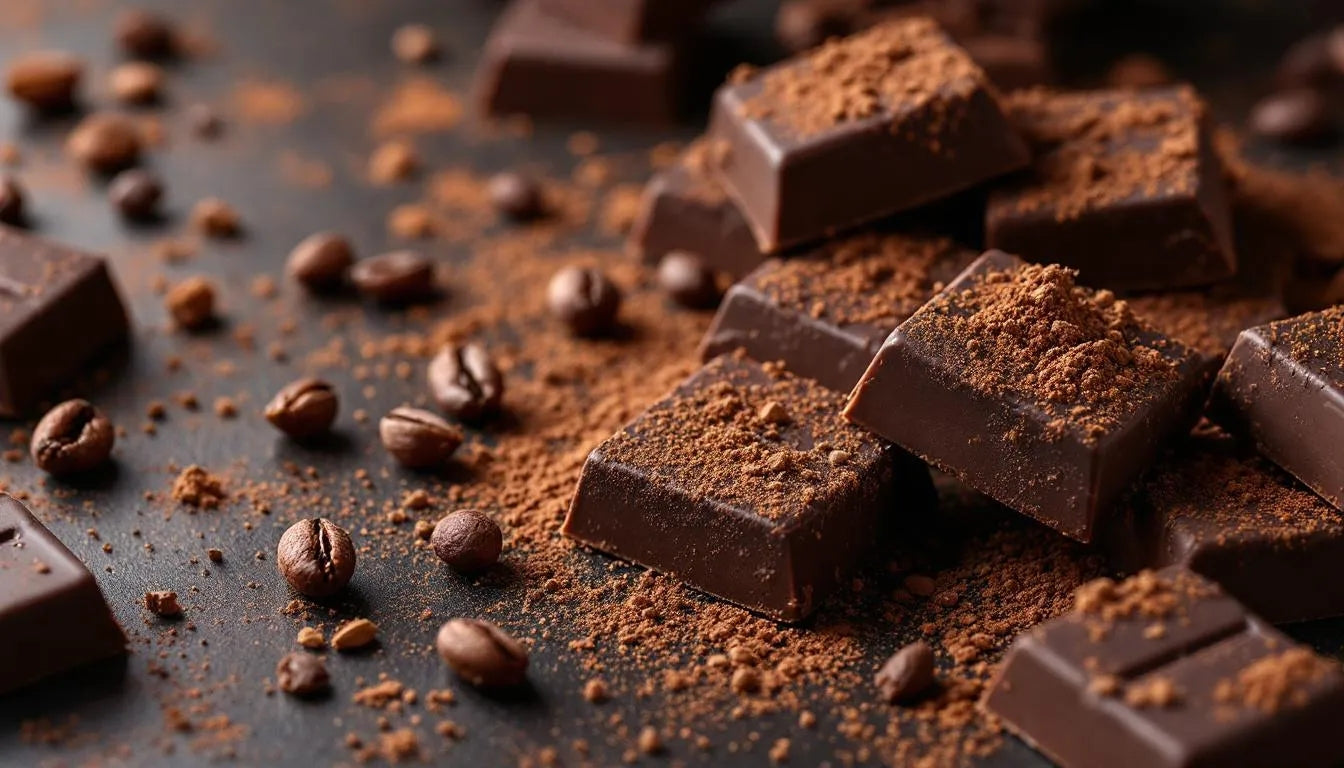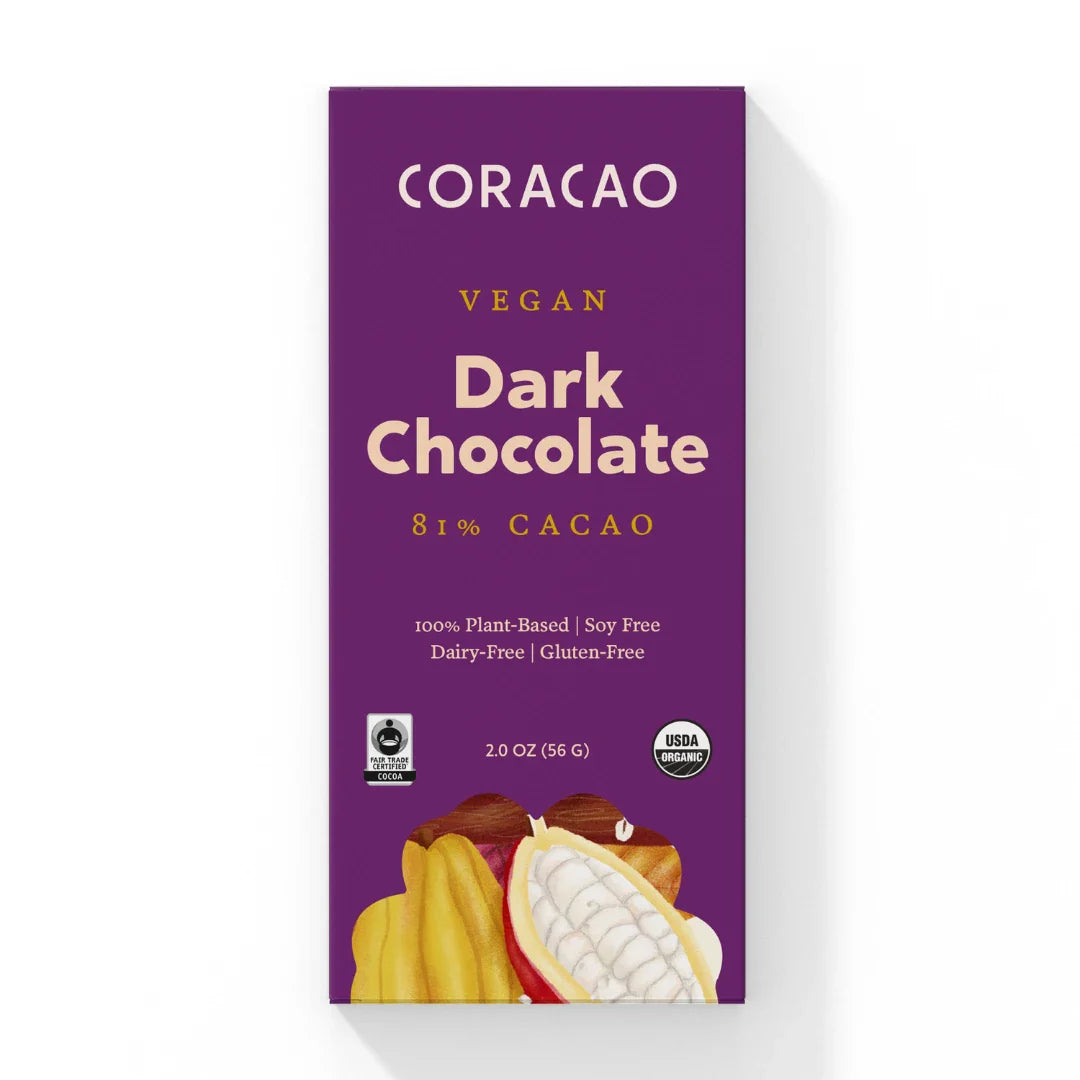
How to Make Cacao Powder: From Bean to Superfood Powder
Ever wondered how to transform raw cacao beans into the nutrient-rich powder that's become a modern superfood staple? Making cacao powder involves fermenting, drying, and cold-pressing cacao beans to separate the fat (cacao butter) from the solids, then grinding those solids into fine powder. While commercial production requires specialized equipment, you can create small batches of fresh cacao powder at home using modified techniques. Let's explore both traditional methods and home adaptations for creating this ancient superfood.
Understanding the Traditional Cacao Powder Process
From Tree to Powder: The Complete Journey
The journey of cacao begins with harvesting cacao pods and involves several crucial steps:
- Harvesting: Fresh cacao pods are cut from trees
- Pod Breaking: Pods opened to extract beans and pulp
- Fermentation: Beans ferment naturally for 5-7 days
- Drying: Sun-dried or low-temperature dried
- Roasting (optional): For cocoa powder vs. raw cacao
- Winnowing: Shells removed to reveal cacao nibs
- Pressing: Fat extraction to separate cacao butter
- Grinding: Final powder production
Our organic cacao powder follows these traditional methods using modern equipment to ensure purity and quality while preserving maximum nutritional benefits.

Equipment Needed for Home Cacao Powder Production
Essential Tools
For Small-Batch Production:
- High-powered food processor or grain mill
- Fine-mesh strainer or flour sifter
- Dehydrator or oven with low-temperature settings
- Kitchen scale for precise measurements
- Clean towels for drying
- Airtight storage containers
Professional Equipment (Commercial):
- Hydraulic press for oil extraction
- Industrial grinders
- Temperature-controlled fermentation chambers
- Specialized winnowing machines
Alternative Methods for Home Use
Food Processor Method: Most accessible for home producers Coffee Grinder Adaptation: For very small quantities High-Speed Blender: Can work with modifications Manual Pressing: Using cheese press or similar equipment
Quality Considerations: Understanding what makes high-quality cacao powder helps you evaluate your homemade results against commercial standards.
Step-by-Step Home Production Method
Step 1: Sourcing Quality Cacao Beans
Where to Find Beans:
- Specialty coffee roasters
- Online cacao suppliers
- Health food stores
- Direct from cacao farms
Quality Indicators:
- Plump, uniform beans
- Fresh, chocolatey aroma
- No mold or off-odors
- Preferably organic and fair-trade
Step 2: Preparation and Cleaning
Initial Cleaning:
- Remove any debris or broken beans
- Rinse gently if necessary (minimal water)
- Sort by size for even processing
- Allow to dry completely if washed
Shell Removal (Winnowing):
- Crack beans carefully with rolling pin
- Use hair dryer to blow away lighter shells
- Pick out remaining shell pieces by hand
- Reserve clean cacao nibs for processing
Step 3: Fat Extraction (The Challenge)
Home Limitations: Commercial cacao powder requires hydraulic pressing to remove 70-75% of cacao butter. Home methods can only partially remove fat, creating a different end product.
Modified Home Approach:
- Heat Processing: Gently warm nibs to 100-110°F
- Grinding: Process in food processor until it forms paste
- Straining: Press through fine mesh to separate some oil
- Dehydrating: Spread remaining solids and dry at low temperature
Realistic Expectations: Home-made powder will contain more fat than commercial versions but still provides excellent flavor and nutrition.
Step 4: Grinding to Powder
Food Processor Method:
- Process dried cacao solids in small batches
- Pulse to prevent overheating and oil release
- Sift through fine mesh regularly
- Re-process larger pieces until uniformly fine
Temperature Control:
- Keep processing temperature below 118°F for raw powder
- Allow machine to cool between batches
- Work in small quantities for better control
Step 5: Final Processing and Sifting
Achieving Fine Texture:
- Sift powder through increasingly fine screens
- Re-grind any remaining larger pieces
- Repeat until desired fineness achieved
- Final sift for uniform consistency
Quality Assessment:
- Color should be rich, dark brown
- Texture should be fine and powdery
- Aroma should be intensely chocolatey
- No lumps or gritty pieces
Professional Production vs. Home Methods
Commercial Advantages
Hydraulic Pressing: Removes 70-75% of cacao butter for true powder consistency Temperature Control: Precise climate management preserves nutrients Specialized Equipment: Designed specifically for cacao processing Quality Testing: Laboratory analysis ensures purity and safety Consistent Results: Standardized processes produce uniform products
Our commercial processing methods ensure optimal nutrition retention while creating the fine texture and intense flavor our customers expect.
Home Production Realities
Higher Fat Content: Home methods can't remove all cacao butter Texture Differences: Resulting powder may be more coarse Labor Intensive: Requires significant time and effort Equipment Limitations: Standard kitchen tools have constraints Yield Variations: Less predictable output quantities
When to Choose Each Method
Home Production Benefits:
- Complete control over ingredients and process
- Educational experience
- Small-batch freshness
- Cost savings for large quantities
Commercial Quality Advantages:
- Consistent nutrition and texture
- Food safety standards
- Convenient availability
- Professional flavor profiles
Quality Considerations and Safety
Food Safety Protocols
Cleanliness: Sanitize all equipment before use Temperature Monitoring: Avoid overheating that can create harmful compounds Storage: Proper drying prevents mold growth Testing: Monitor for off-flavors or aromas
Nutritional Preservation
Raw Processing: Keep temperatures below 118°F to maintain enzyme activity Minimal Oxidation: Work quickly and store properly Light Protection: Prevent UV exposure during processing Air Exposure: Minimize contact with oxygen
Understanding cacao's nutritional benefits helps you optimize your home processing for maximum health value.
Quality Indicators
Visual Assessment:
- Rich, dark brown color
- Fine, uniform texture
- No visible mold or contamination
- Consistent appearance throughout
Sensory Evaluation:
- Intense chocolate aroma
- Clean, bitter taste (if raw)
- No off-flavors or rancidity
- Smooth mouthfeel when mixed with liquids

Storage and Preservation
Optimal Storage Conditions
Temperature: Cool, consistent environment (60-70°F) Humidity: Low moisture to prevent mold Light: Dark storage containers Air: Airtight containers to prevent oxidation
Container Options
Glass Jars: Non-reactive and easy to clean Food-Grade Plastic: Convenient and lightweight Vacuum-Sealed Bags: Maximum freshness preservation Metal Containers: Good protection from light
Shelf Life Expectations
Home-Made Powder: 6-12 months when properly stored Commercial Quality: Our cacao powder maintains quality for 2-3 years Signs of Deterioration: Off-odors, color changes, clumping
Using Your Homemade Cacao Powder
Recipe Adaptations
Higher Fat Content: Your powder may require recipe adjustments Liquid Ratios: May need less liquid due to residual oils Sweetener Needs: Natural bitterness may require more sweetening Texture Considerations: Possible grittiness in some applications
Best Applications
Hot Beverages: Learn how to make hot chocolate with cacao powder using your homemade version Smoothies: Excellent for adding chocolate flavor and nutrition Baking: Works well in muffins, cakes, and cookies Raw Desserts: Perfect for energy balls and raw treats
Flavor Development
Aging: Flavor may improve with proper storage over time Blending: Mix with commercial powder for optimal results Experimentation: Try different bean varieties for unique flavors
Cost Analysis: Home vs. Commercial
Home Production Costs
Initial Investment: Equipment purchase ($100-300) Raw Materials: Cacao beans ($8-15 per pound) Time Investment: 4-6 hours per batch Learning Curve: Several attempts to perfect technique
Value Considerations
Break-Even Point: Usually after 5-10 pounds of production Quality Trade-offs: Lower initial quality vs. convenience Educational Value: Knowledge gained about cacao processing Satisfaction Factor: Pride in creating from scratch
When Home Production Makes Sense
Large Consumption: Families using significant quantities Learning Goals: Educational or hobbyist interests Remote Locations: Limited access to quality commercial products Specific Requirements: Unique processing preferences
Troubleshooting Common Issues
Problem: Powder Too Coarse
Causes: Insufficient grinding, equipment limitations Solutions: Extended processing, finer sifting, better equipment
Problem: Too Much Oil Remaining
Causes: Inadequate fat extraction Solutions: Extended pressing, temperature adjustment, accept higher fat content
Problem: Off-Flavors
Causes: Poor quality beans, contamination, overheating Solutions: Source better beans, improve sanitation, temperature control
Problem: Poor Color
Causes: Over-roasting, oxidation, poor-quality starting material Solutions: Monitor temperatures, reduce air exposure, source quality beans
The Environmental and Ethical Considerations
Sustainable Practices
Local Sourcing: Reduce transportation impact when possible Organic Beans: Support environmentally responsible farming Waste Reduction: Use cacao shells for compost or tea Energy Efficiency: Optimize equipment use
Supporting Cacao Farmers
Fair Trade: Choose ethically sourced beans Direct Trade: Support farmer cooperatives when possible Quality Premium: Pay fair prices for quality beans Long-term Relationships: Build sustainable supply chains
Our commitment to ethical sourcing demonstrates how commercial operations can support farmer communities while producing superior products.
Frequently Asked Questions
Can I make cacao powder without special equipment?
While possible, results will be limited. A high-powered food processor is the minimum requirement for acceptable results. Commercial equipment produces significantly better texture and fat extraction, which is why professionally made cacao powder offers superior consistency.
How much cacao powder can I make from one pound of beans?
Expect about 4-6 ounces of powder from one pound of beans, depending on your fat extraction efficiency. Commercial operations yield about 50% powder and 50% cacao butter, but home methods retain more fat in the final product.
Is homemade cacao powder as nutritious as commercial versions?
Homemade powder can be highly nutritious if processed correctly at low temperatures. However, professional processing methods often preserve more nutrients through controlled conditions and specialized equipment.
How do I know if my homemade cacao powder is safe to consume?
Ensure proper fermentation and drying of beans, maintain clean processing conditions, and store properly. If you notice any off-odors, unusual colors, or mold, discard the product. When in doubt, choose certified organic cacao powder for guaranteed safety.
Why does my homemade powder taste different from store-bought?
Differences in bean variety, fermentation, processing temperature, and fat content all affect flavor. Commercial producers also blend different bean origins for consistent flavor profiles. Your homemade version reflects the specific characteristics of your chosen beans and processing method.
Can I sell homemade cacao powder?
Commercial sale requires meeting food safety regulations, proper licensing, and facility inspections. Home production is generally limited to personal use unless you meet commercial food production standards in your jurisdiction.
Quick Production Guide (Featured Snippet Optimized)
To make cacao powder: Start with quality cacao beans, remove shells (winnowing), grind to paste, extract fat through pressing/straining, dry remaining solids, grind to fine powder, and sift for consistency. Home methods produce higher-fat powder than commercial versions. Expect 4-6 oz powder per pound of beans. Requires food processor, strainer, and 4-6 hours processing time.
Master the Art of Cacao Processing
Creating cacao powder at home provides invaluable insight into this ancient process while connecting you directly to the source of chocolate's magic. While home production has limitations compared to professional methods, the educational value and satisfaction of creating your own superfood powder make it a worthwhile endeavor for dedicated cacao enthusiasts.
For those seeking the perfect balance of convenience, quality, and nutritional benefits, our professionally crafted organic cacao powder represents the pinnacle of traditional processing combined with modern quality standards. Sourced directly from Peru's finest cacao farms and processed using methods that preserve maximum nutritional value.
Whether you choose to make your own or select premium commercial options, understanding the process deepens appreciation for this remarkable superfood. Explore our complete collection of ethically-sourced cacao products to experience the difference that quality processing and sustainable sourcing make.
Learn more about cacao's journey from farm to powder through our comprehensive blog, where we share insights about traditional methods, modern innovations, and the artistry behind creating exceptional cacao products. Your journey into conscious chocolate consumption begins with understanding the remarkable transformation from humble bean to powerful superfood.

Claire Bennett
I'm Claire, a chocolate lover and artisan based in a small town where I run a tiny home kitchen dedicated to exploring everything chocolate. From single-origin dark bars to creamy ganache and handmade truffles, I find joy in working with all types of chocolate. I believe chocolate has a story, and I love bringing that story to life through humble, heartfelt creations.



Leave a comment
This site is protected by hCaptcha and the hCaptcha Privacy Policy and Terms of Service apply.